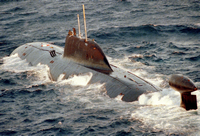Naval power is characterized by fungibility and flexibility. Because of the relatively open nature of the seas, ships and fleets can be transferred between ports and crisis zones in order to conduct operations or exert influence. Indeed, one of the key appeals of naval power is the ability of warships to respond to crises in a variety of locations without requiring a longstanding political and infrastructural commitment.
However, of all the major naval powers, Russia remains most tightly constrained by its unfortunate maritime geography. Russian warships based in the Arctic, Baltic, Black Sea and Pacific cannot easily support one another. This problem was most dramatically demonstrated in the Russo-Japanese War of 1904, in which the Imperial Japanese Navy effectively destroyed the Russian Pacific Fleet and the Russian Baltic Fleet. Only Ottoman intransigence prevented the Russian Black Sea Fleet from meeting the same fate. Russian naval policy suffered from similar constraints in World Wars I and II as well as during the Cold War.
Consequently, Russia faces a strategic dilemma whenever it makes decisions about the basing of its warships. Because of the relative isolation of its fleets, warships deployed to one region cannot be readily redeployed in times of crisis, and the influence that a fleet provides over its surrounding region cannot be transferred to other areas. In short, Russian naval power is neither fungible nor flexible. Other states face similar issues, but not usually to the same extent. Russian naval deployments must therefore reflect a level of political and strategic commitment to a region not required in the strategic planning of other nations.

